Archives
February, 2013
Select a different month in the archive
Child’s Facial Features May Predict Autism Diagnosis
By Shana R. Spindler, PhD on February 22, 2013
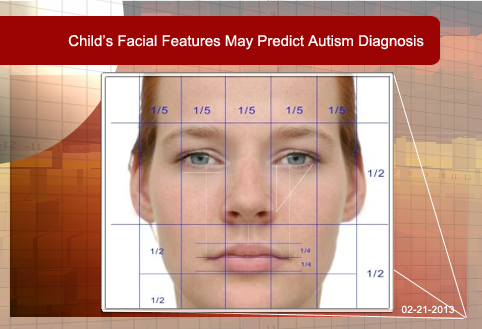
Background: Genes, small sections of DNA that code for proteins, control how the body develops and functions. Autism Spectrum Disorder (ASD) is known to have a strong genetic component. Some of the genes that contribute to autism may also help shape body and facial features. Researchers hypothesize that certain physical characteristics may predict an autism diagnosis.
What’s New: Researchers at University Medical Center in Utrecht, The Netherlands, and at the University of California, Los Angeles, discovered that facial asymmetry, abnormal hair whorls, and a prominent forehead are highly predictive of ASD in a Caucasian population. None of the abnormalities, however, linked to a specific ASD subgroup, such as Autistic disorder or Asperger syndrome. The collaborators published their findings in the January 2013 issue of the Journal of Autism and Developmental Disorders.
Why it’s important: Many doctors believe that early intervention can positively affect behavioral outcomes in children with autism, and evidence supports this claim. To date, the only way to diagnose autism is through careful observation of a child’s behavior. The current study suggests that the measurement of specific physical features may become a tool used by doctors to help predict an ASD diagnosis before behavioral problems arise.
Help me understand :
| Source(s) : |
| Tweet |
Cognitive-Behavioral Therapy Eases Anxiety in ASD
By Chelsea E. Toledo, M.A. on February 21, 2013
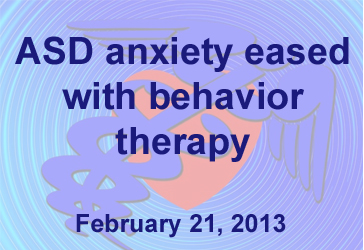
Background: Research demonstrates that about half of children with autism spectrum disorder (ASD) also experience clinically significant anxiety, and that ASD symptoms are often worse when they do. Preliminary studies using cognitive behavior therapy have shown promising results for treating anxiety in ASD individuals
What’s New: In the February 2013 issue of the Journal of the American Academy of Child & Adolescent Psychiatry, researchers demonstrated that an adapted form of cognitive-behavioral therapy (CBT) —an goal-oriented intervention divided into modules for children and parents—was more effective than treatment as usual (TAU) at decreasing symptoms of anxiety in children with ASD in a randomized, controlled trial. The scientists recruited 45 children between the ages of 7 and 11 and divided them into two treatment arms, some receiving CBT and others continuing with the management plan they had taken beforehand. After 16 weeks, 75 percent of participants in the CBT arm responded to treatment, as opposed to 14 percent in the TAU arm.
Why it’s important: Because certain symptoms are common to both ASD and anxiety—namely social avoidance and repetitive responses—CBT could prove an effective treatment for both ASD and anxiety.
Help me understand :
| Source(s) : |
| Tweet |
Mitochondrial DNA Damage Linked to Autism
By Stacy W. Kish on February 14, 2013
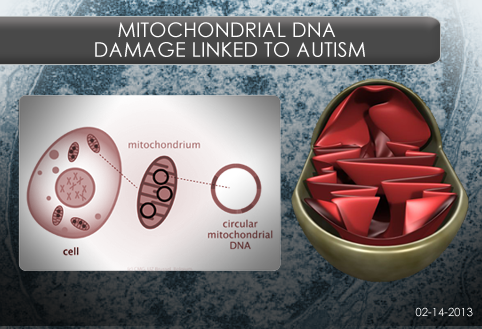
Background: Mitochondria, the powerhouses of the cell, have a set of DNA separate from the DNA in a cell’s nucleus. Some mitochondrial DNA codes for enzymes involved in energy conversion. During this conversion, reactive oxygen species (ROS) are produced that can cause damage to the cell, especially to the mitochondrial DNA. Few studies have examined mitochondrial DNA damage in children with Autism Spectrum Disorder (ASD), even though ROS production is reported to be higher in these children.
What’s new: A group of scientists at the University of California, Davis examined mitochondrial DNA (mtDNA) damage in autistic and typically developing children and their parents by direct sequencing of selected regions of their mitochondrial DNA. The participants were recruited from the CHildhood Autism Risk from Genes and Environment study (CHARGE).
The researchers found evidence of increased mtDNA damage in children with autism. The children appear to inherit mtDNA template damaged by oxidative stress from their mothers. In addition, the children may inherit a susceptibility to mtDNA deletions from their fathers, but fathers do not pass mtDNA to children.
Why it’s important: The amount of mtDNA damage in children with autism is similar to that of an older person. How environmental factors that contribute to increased mtDNA damage combine with genetic susceptibility to mtDNA deletions is an important area of investigation in the search for autism risk factors. This study provides a new line of evidence for the influence of mitochondrial DNA damage in autism.
Help me understand :
| Source(s) : |
| Tweet |
Deep Brain Stimulation Improves Autism Symptoms
By Chelsea E. Toledo, M.A. on February 7, 2013
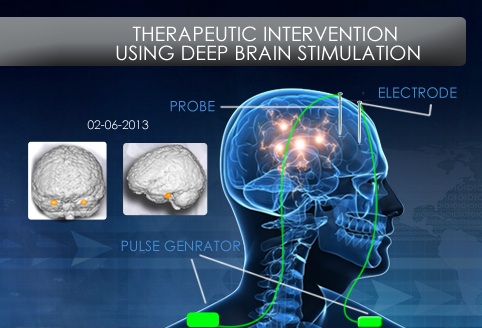
Background: Studies have shown that individuals with Autism Spectrum Disorder (ASD) have up to a 20 percent chance of injuring themselves. In the 1960s and 1970s, interventions were shown to improve epilepsy-related aggression when doctors targeted the amygdala, a brain region associated with emotional learning.
What’s New: In the January 21, 2013, issue of the journal Frontiers in Human Neuroscience, researchers published a study exploring the hypothesis that stimulating the amygdala would alleviate self-injurious behavior (SIB) related to ASD. They surgically implanted electrodes in the amygdala of a 13-year-old boy suffering from Kanner’s autism, also referred to as early infantile autism, and severe SIB. When the electrodes placed in the amygdala’s basolateral section were stimulated, the boy made significant strides in overcoming SIB as well as the emotional, social, and cognitive deficits related to autism.
Why it’s important: This study, the first to demonstrate such results in a patient, suggests that the amygdala—especially its basolateral section—is important for understanding behaviors related to ASD, and could provide a potential target in its treatment.
Help me understand :
| Source(s) : |
| Tweet |
In Vitro Fertilization Not Likely To Increase ASD Risk
By Mark N. Ziats on February 1, 2013
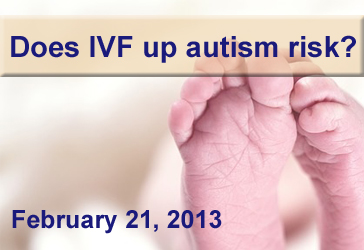
Background: Couples who cannot conceive children naturally may choose in vitro fertilization (IVF), where sperm fertilize an egg outside the body and doctors implant viable embryos into the woman. While some speculate that IVF conception may associate with development of Autism Spectrum Disorders (ASD), rigorous studies investigating the link are lacking.
What’s new: In a new study published in the journal Human Reproduction, researchers investigated the link between IVF and ASD using a Finnish registry with birth records of 20,000 children followed up to age 16. In the registry, approximately 1.51% of the children who eventually developed ASD or a related syndrome (e.g. Asperger’s) were conceived by IVF. This was not significantly increased from the 1.38% of children who were conceived via IVF but did not go on to develop ASD, after controlling for age, sex, place of birth, socioeconomic status, mother’s age, and birth number.
Why it’s important: A previous 2011 study in Denmark investigating the association between assisted conception and autism found no significant correlation between IVF and the later development of autism. This latest report supports those findings, and while additional studies are needed to confirm these results, the current evidence suggests that IVF treatments are not likely to increase ASD risk.
Help me understand :
| Source(s) : |
| Tweet |

